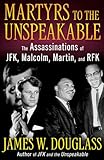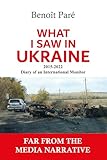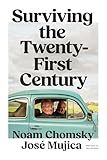I retired from the University of Texas at Austin journalism school eight years ago, but I can’t stop thinking like a teacher. So when I read the Texas Tech University chancellor’s memo instructing employees to comply with state and federal dictates that “recognize only two human sexes: male and female,” I pondered how I might use such a “teachable moment” if I were still in the classroom.
The self-preservation instinct would make it tempting to avoid any response to such political directives. The memo doesn’t specify what can and can’t be said in the classroom, but fear of retribution will likely keep some from engaging those topics in class. Putting aside important questions of academic freedom, I want to focus on academic responsibility.
The debate over transgender identity and ideology would make a great lesson in covering controversial social issues, an important part of the job of journalism instructors. Such teaching wouldn’t be advocacy, except perhaps advocacy for the clear thinking necessary for good journalism.
Traditional journalism has had many critics from many angles (I have offered a left-leaning critique of establishment journalism for decades), but let’s stipulate that in a democratic society journalists should bring to the public reliable information and coherent analysis about cultural conflicts and policy debates. My lesson plan on the transgender debate would focus on clarifying definitions, explaining the policy implications, and understanding competing philosophies.
Definitions: Too often, the words “sex” and “gender” are used interchangeably, which muddies the conceptual waters. I stick to the distinction between biological sex categories (male or female, with a small percentage of people born with “differences of sexual development,” what is also called “intersex”) and cultural gender norms (masculine and feminine). With that understanding, the key question is what “transgender” means, a common confusion that people are often hesitant to express. If people who are biologically male identify as trans, for example, does that mean they are claiming to be female or that they are just more comfortable with feminine cultural norms? The biological claim is hard to understand (how can a male person actually be female?) and the cultural claim raises questions about whether drugs, cross-sex hormones, and surgery are appropriate responses to discomfort with social roles (would it be more effective to challenge those rigid norms?). The same question also can be asked about the term “non-binary.” The trans movement has no central authority and no single answer to these questions, but without clear definitions, it’s difficult to have a productive debate.
Policy implications: Three general categories of laws and public policies are hotly debated today. One is the rules for what is often called “gender-affirming care” for minors. Can the government limit the use of drugs, cross-sex hormones, and surgery for children who experience gender dysphoria (the distress experienced when a person’s sense of gender identity is at odds with biological sex)? Two is single-sex spaces for women, such as sports, bathrooms, changing rooms, and prisons. Should males who identify as women be allowed in female-only spaces that exist to create opportunities for girls and women and to protect privacy and safety? Three is an overall question of how to refer to people who identify as trans, such as pronoun preferences. Should the government take a position on those choices in public or private institutions?
Competing philosophies: Behind the policy debates are several different philosophical positions. Most supportive of the trans movement are liberal and postmodern feminists, who generally accept the trans claims and see no conflict with women’s rights and concerns. Liberals and leftists tend to accept that position or avoid the question. Challenges to trans claims come from conservative and/or religious people who offer a natural or divine account of separate spheres for men and women; radical feminists who assert that the trans movement is antifeminist; and an often apolitical scientific position that rejects notions of sex as a spectrum. The right-wing objections tend to embrace patriarchy (institutionalized male dominance) as the appropriate organization of society. Radical feminists reject patriarchy. The apolitical challengers to trans ideology do not necessarily take a position on patriarchy.
This lesson plan would require at least a week of class time, given the wide-ranging opinions held by students at a public university such as UT Austin. Emotions could be expected to run hot at times. Trans-identified students and their supporters might find the questions to be a thinly veiled attack. Students committed to theological positions might feel threatened by secular analyses. Many students might be wary of saying anything, just to avoid conflict. But that is what makes transgenderism such a compelling topic for examination in a journalism class. Journalists can’t escape these questions in their work, and professors’ job is to prepare students to face such challenges.
I have made my views on these questions clear in writing for the general public, most recently in a chapter for a book on constructive debating that, ironically, the publisher pulled from the printed book at the last minute. (The chapter is online for free at my website.) My critics might argue that I’m biased and should be barred from teaching such a lesson. But that would mean any professor who had formed any opinion on the issue, including supporters of the trans movement, should recuse themselves. If that were the standard, it would be hard for anyone to teach much of anything about contentious contemporary political issues. The question asked of professors shouldn’t be “Do you have an opinion?” but rather “Do you have a command of the issues and can you present material accurately and fairly?”
I don’t know how the Texas Tech directive will affect professors’ choices in the classroom, and no one asked my advice. But when these issues are relevant to a professor’s discipline, I would defend the academic freedom of those who choose to teach about the subject and encourage responsible teaching that can contribute to a collective resolution of an important debate that is tempting to avoid.










